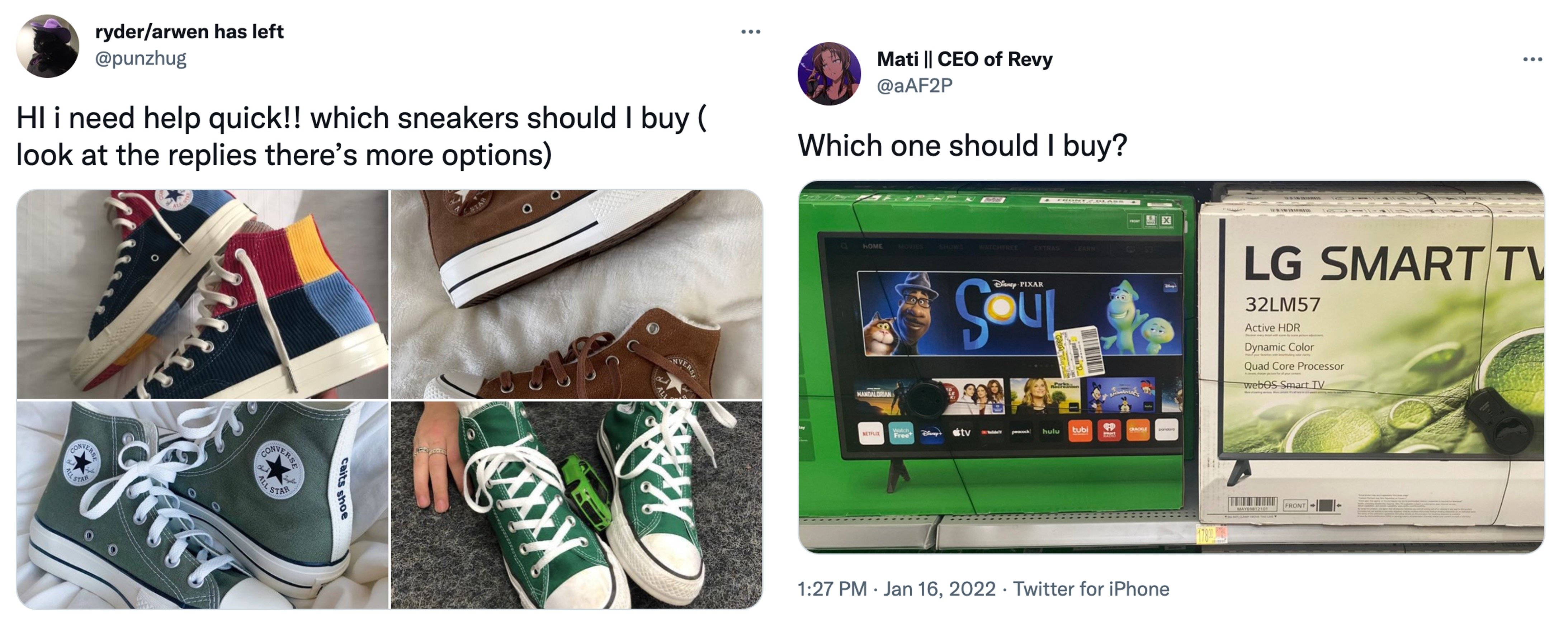Everything. The consumer shopper journey today is more dynamic and unpredictable than ever before. It's dynamic because consumers can shop at any time of the day, anywhere they want, and there are hundreds of apps that can deliver a customized shopping experience.
It's unpredictable because customer attention is at a premium. They crave relevance and block out everything else. So they only want to engage with content when it's relevant at that precise moment in time, and when they buy, it's on their terms.
Today, it is critical for brands to understand the shopper's journey and use audience data to uncover new ways to improve the customer experience.
Consumer Attention Doesn't Come Easy
We live in a world where consumer attention is at a premium, requiring brands to think creatively and use data-driven storytelling to reach their audiences with powerful stories. B2B and consumer brands need to think out of the box to capture audience attention, drive interest and sell products. With the pandemic still in full swing, it's all about survival.
During the 1960s, American Educator Edgar Dale theorized that people retain more information by what they "do" as opposed to what is "heard," "read," or "observed." His research led to the development of the Cone of Learning, which academics still use today.
His philosophy is a good case study for brands today. According to the Cone of Learning, after two weeks, consumers will remember:
- 10% of what they read
- 20% of what they hear
- 30% of what they see
- 50% of what they hear and see
- 70% of what they participate with
- 90% of what they do
This brings up an interesting challenge for brands today. Based on how dynamic consumers are when they consume media and information on the Internet, brands need to think about all the senses and tell stories in different ways so that consumers can consume information based on their preferences.
This means that brands need to think strategically about the long-form content they publish on blogs and communities, social media content, video storytelling, podcasts, social audio, and, more importantly, their storytelling approach across the overall customer experience.
The content must be relevant, consistent, creative, and aligned to the overall brand narrative.
When you start to layer on the complexities of the shopper journey, shopping apps, and in-store experiences, you can imagine how difficult it will be to reach consumers in each of these mediums.
While this may seem challenging, there is also an opportunity to use audience data to understand consumer behavior better; and use that data to inform your digital strategy.
Audience Data Provides Clarity
While consumers today are dynamic in using social media, purchasing products, and having conversations, they are also creatures of habit. They tend to read the same media publications based on their interest. They subscribe to different podcasts and tell all their friends about the episodes they just listened to. They publicly talk about the products and services they have high affinities for. They follow their favorite brands on social media and, in many cases, defend them when others are criticizing them online.
All these actions that consumers are taking on social media are breadcrumbs. But, when coupled together, they start to paint a picture about a very specific and targeted shopper journey. They provide unique insights into how particular audiences interact with brands, what articles they are reading and sharing, what channels they use, and why and what conversations they have when they're in the market to buy something new.
Audience data can tell you which brands consumers love, hate, and tolerate. Getting a 360-degree view of an audience and their shopping habits can tell you many things. For example, you may find that your audience shops at Whole Foods when grocery shopping, they may prefer Lululemon for their workout clothes and attire, and they only use Apple products. Based on this data, it's safe to conclude that this audience has disposable income because they shop at higher premium brands. They may also prefer to eat only organic and all-natural foods.
Audience data can tell you what consumers are interested in. Consumers today are not shy about telling and showing the world and their communities on social media what they're doing on the weekends. They could be hiking, working out, playing video games, or writing a book. In many cases, they seek validation from others or crave engagement from their posts.
For example, when building audiences for B2B and enterprise brands, one might think that business decision makers are boring and that all they care about is technology. This is not true. Business decision-makers are people too. They are dads, moms, coaches, students, and they have interests outside of work. For example, the data might show that they prefer Spotify over Apple Music as their favorite music streaming app. You may also find that they are sports fans and have a high affinity for Tom Brady and the Patriots, not that they are related anymore.
This is even more true for general consumers, especially millennials and the Gen Z audience. Building on the example above, perhaps you're launching a new dating app. One of your target segments is single women who are fitness enthusiasts, ages 28 to 45, who shop at Whole Foods, Lululemon, and only use Apple products. The audience analytics may uncover additional helpful interests like maybe they like to travel and have an obsession for shopping online at Etsy and eBay.
Audience data can tell you what consumers are reading. Every time a consumer shares an article or talks about something they read on the Internet that becomes a breadcrumb and insight into their media preferences. This type of data is essential for brands because it uncovers which media outlets the audience trusts.
For example, it's common knowledge that business decision makers read the New York Times and the Wall Street Journal. That's a given. But the data might reveal that they over-index in reading MIT Technology Review and have a higher affinity for reading articles published in the Harvard Business Review.
When looking at a general consumer audience, it's more challenging to identify specific traits and media preferences. In some cases, it may require more information to narrow down the audience and extract actionable insights. However, for the company launching a dating app, it won't be challenging to identify the media publications that the audience is reading regarding relationships, dating, and advice. For example, do they read the mainstream relationship columns in People Magazine and Cosmopolitan, or do they prefer getting their relationship advice from Reddit? The data will tell you this.
Audience data can tell you what's relevant to consumers. For example, when consumers are in the market for a new jacket or backpack, it's not uncommon for them to announce it on social media. They often ask their friends, fans, and followers for recommendations on what to buy. The back and forth between consumers and their communities are data points, but the journey does not stop there.
Once consumers are more in the consideration phase of purchasing a product, they will likely tell their audience what they are considering and ask them which one they should get.
Here are two recent examples of people asking their communities which sneakers and TV they should buy.

As consumers move down the path of the shopper journey, they also like to share what they decided to buy and get their community's reaction. Again, more breadcrumbs. More data points.

And lastly, in response to those consumers asking questions about what mobile phone provider to choose, which guitar to buy, or what movie to see, there are those on the other side of the equation providing feedback and recommendations. They recommend the brands, products, and services that they have experienced in their past.

These are just a few examples of using audience data to generate consumer insights and understand more about who they are and what they care about. It's important to consider that relevancy changes. What's relevant to one consumer today might not be relevant tomorrow.
Audience data can give you a glimpse into the thoughts, desires, and preferences of consumers historically and over a period of time. It can also give you a real-time look at what is relevant to consumers right now.
2022 is here, and it's not getting any easier to reach audiences on digital channels. But the brands using audience data to inform their digital marketing strategies will quickly rise above their competitors and achieve brand relevance with their target customers.

